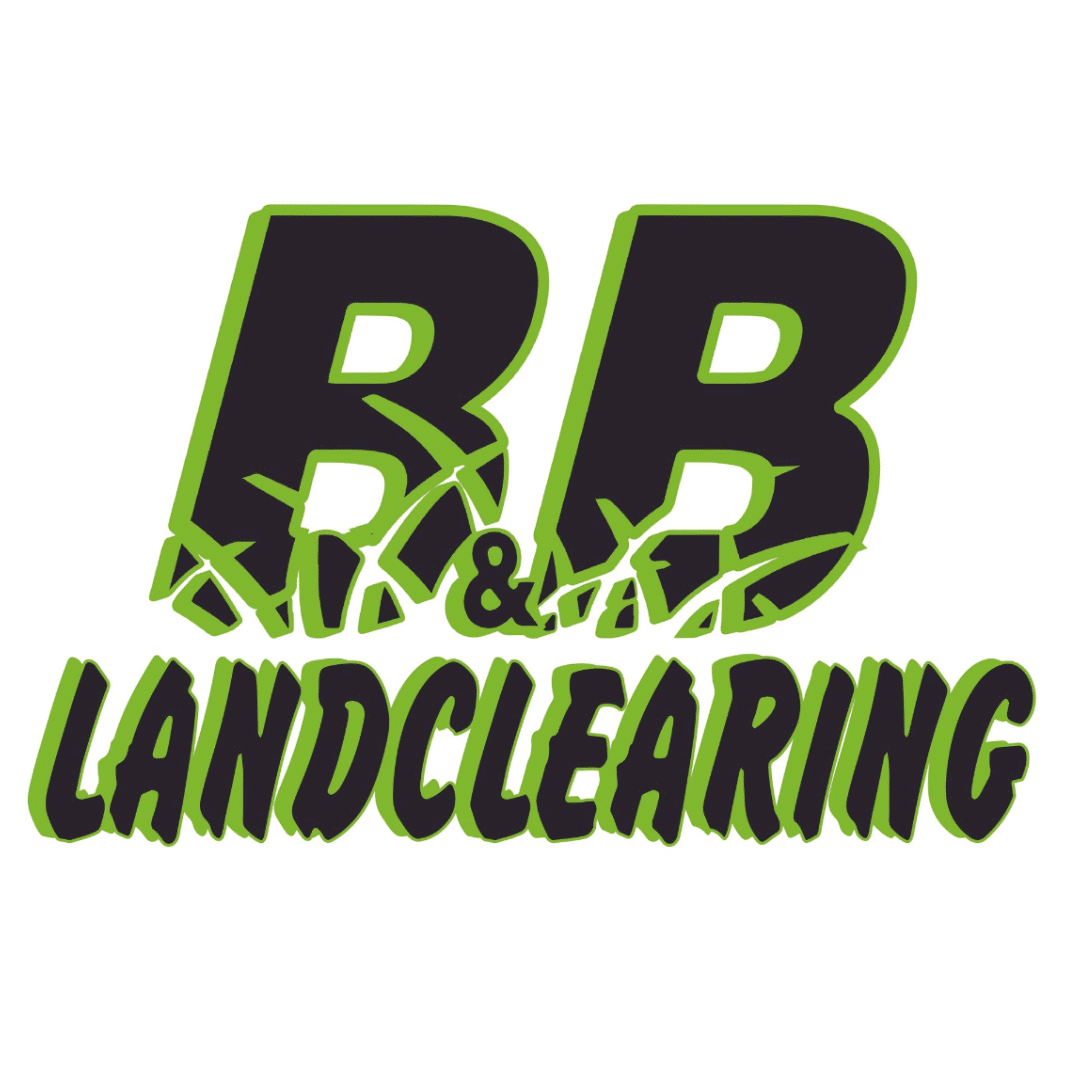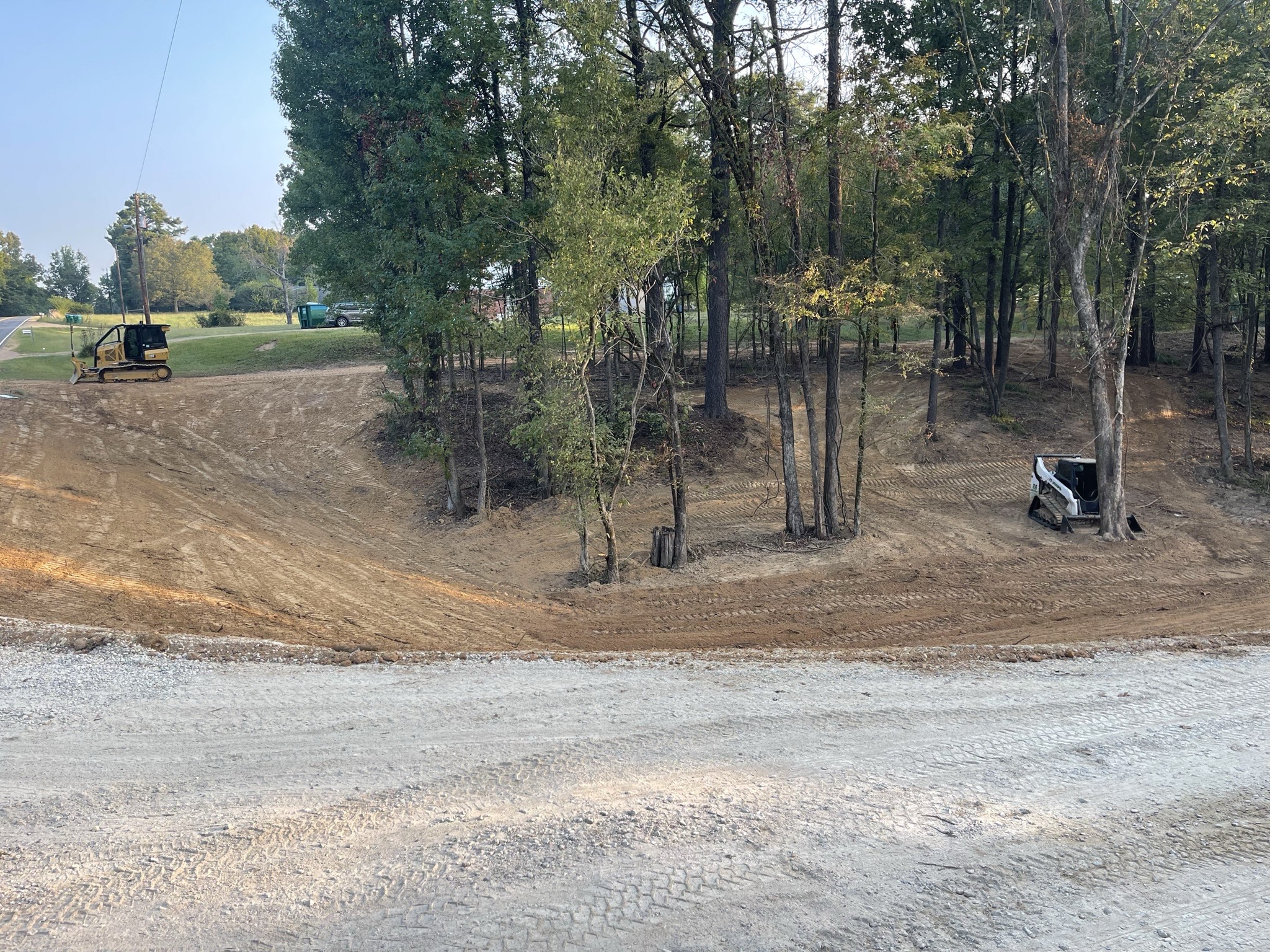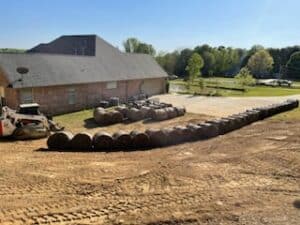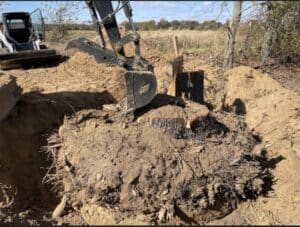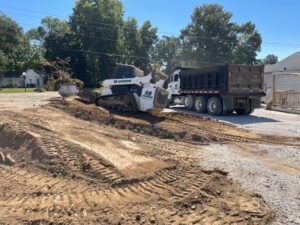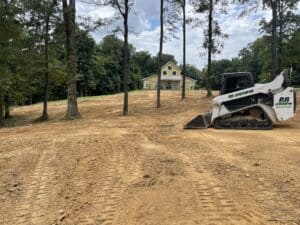The cost per acre varies depending on vegetation, terrain, location, and more.
At B&B Land Clearing, we recognize that choosing a land clearing contractor is a big decision. Whether you’re a Mississippi homeowner looking to clear a small plot or a developer eyeing a larger tract, understanding the expenses involved is crucial. So, how much does land clearing cost in Mississippi? Let’s explore the factors that influence pricing.
We begin every project with a free on-site, in-person evaluation and estimate for your project. Every land clearing project is unique, and the cost per acre varies depending on several factors, including vegetation type, terrain and accessibility, equipment needed, type of clearing requested, and whether special permits are required.
Type of Vegetation
The type of vegetation present on a piece of land significantly impacts the complexity and cost of clearing it. Different types of vegetation require varying levels of effort, equipment, and expertise to remove effectively.
The Delta region of Mississippi is known for its cypress trees, which often grow in swampy or marshy areas with waterlogged soil. Their roots can be extensive and deeply entrenched, requiring special equipment to clear, and special care must be taken not to disrupt local ecosystems or increase soil erosion.
Clearing cypress involves dealing with large trees, thick underbrush, and tangled roots. This type of vegetation requires heavy machinery such as bulldozers, excavators, or forestry mulchers to clear effectively.
Areas covered in brush, shrubs, and smaller trees are generally easier to clear compared to dense forests but still require specialized equipment and techniques. Brush clearing often involves the use of mulching machines or brush mowers to grind vegetation into mulch, which can be left on-site or removed depending on the client’s preference.
Clearing land covered in grass or light vegetation is typically the least expensive option. In these cases, mowing or herbicide application may be sufficient to clear the area, requiring less time and resources compared to clearing dense forests or brush.
Terrain and Accessibility
Terrain and accessibility can impact the efficiency of the clearing process, the types of equipment needed, and the overall labor required—all factors that influence the cost.
Land that is relatively flat and free of obstacles is generally easier and less expensive to clear compared to hilly or uneven terrain. Hilly terrain may require specialized equipment or additional manpower to navigate slopes safely and efficiently. Land with rocky or stony soil also presents unique challenges for land-clearing operations. Depending on the extent of the rockiness, specialized machinery such as rock crushers or hydraulic breakers may be required to clear the area effectively.
Sites located in wetlands or swampy areas pose specific challenges due to waterlogged soil and fragile ecosystems. Special precautions must be taken to minimize disturbance to the surrounding environment and prevent erosion or sedimentation of waterways.
The accessibility of the site plays a significant role in determining the cost of land clearing. B&B Land Clearing is based in Hernando, Mississippi, and serves the Northern Mississippi and Southern Tennessee areas. Sites located in remote or hard-to-reach areas may require additional time and resources for transportation of equipment and materials, as well as increased labor costs. Factors such as road access, proximity to utilities, and availability of staging areas can all impact the efficiency and cost of the clearing process.
Clearing vs. Mulching
Forestry mulching is a land-clearing method that uses specialized equipment to grind and shred trees, brush, and other vegetation into mulch. This mulch is then spread across the cleared area, providing nutrients to the soil and preventing erosion. It is an environmentally friendly alternative to traditional land clearing methods, as it does not require burning or hauling away debris. Additionally, it can promote the growth of native plants and improve wildlife habitats.
Forestry mulching typically requires fewer pieces of heavy equipment compared to traditional land clearing methods. Instead of multiple machines for clearing, hauling, and disposing of debris, forestry mulching combines these tasks into a single process, reducing equipment and operational costs.
However, depending on your specific project, traditional land clearing might be a better option. Forestry mulching should be avoided in areas where a foundation will be constructed atop the cleared land. Mulching doesn’t fully eliminate stumps or root systems, which may decay over time, creating empty spaces that could potentially compromise the foundation.
When we conduct our on-site evaluation before giving you an estimate, we’ll walk you through these options and help you understand whether forestry mulching or land clearing is the right choice for you.
Permits Needed
Sites located near waterways, protected habitats, or environmentally sensitive areas may require permits or compliance with regulatory requirements. Obtaining permits and adhering to environmental regulations can add time and cost to the project, particularly if mitigation measures such as erosion control or habitat restoration are necessary.
Average Cost per Acre
Considering these factors, the average cost of land clearing in Mississippi ranges from $1,500 to $6,000 per acre, depending on the specifics of the project. Our team at B&B Land Clearing is committed to providing competitive pricing and exceptional value to our clients. We have the experience and equipment to clear your land, no matter the vegetation type or terrain. We’ll work with you to create a plan that accomplishes your goals and fits your budget. Contact us today for a free estimate.
